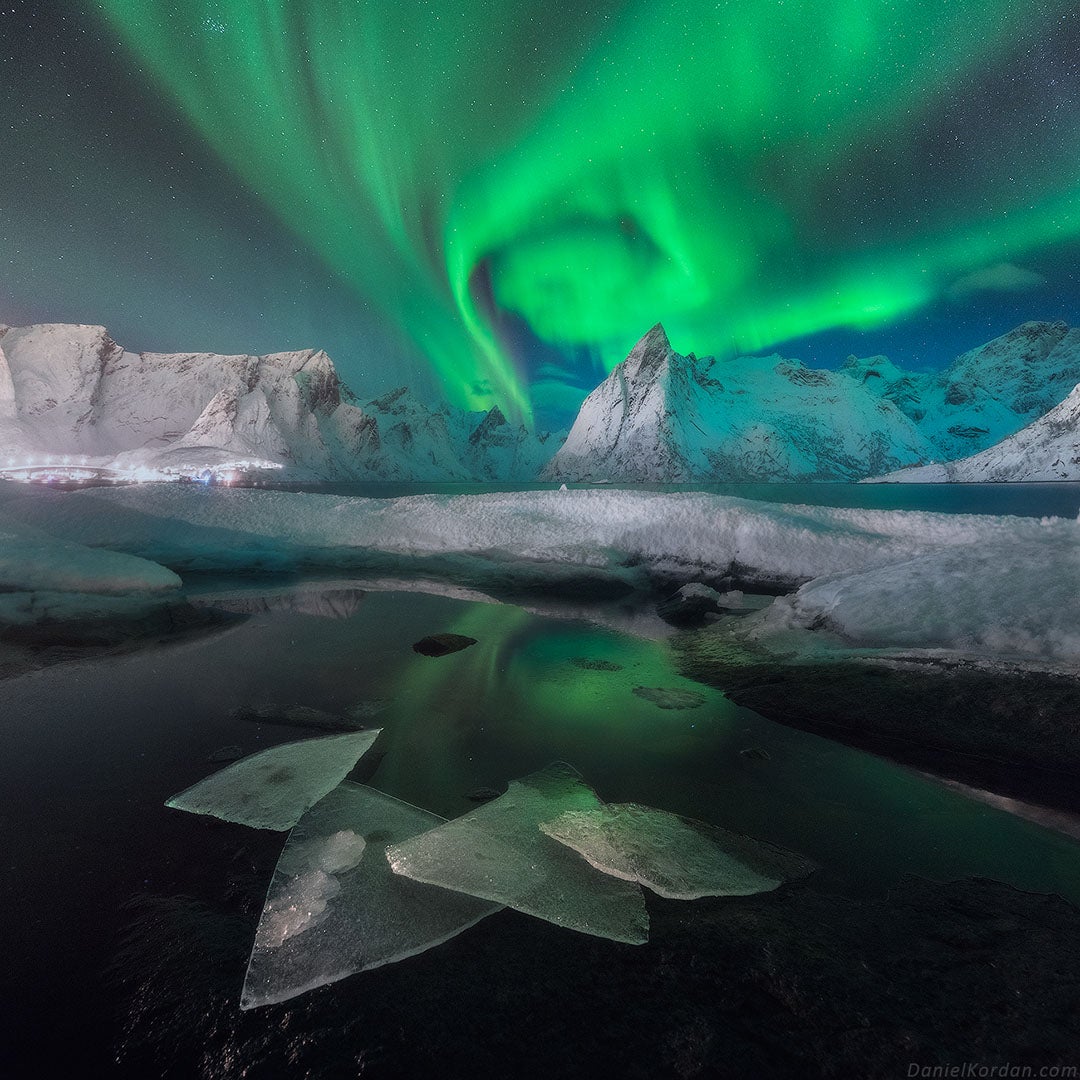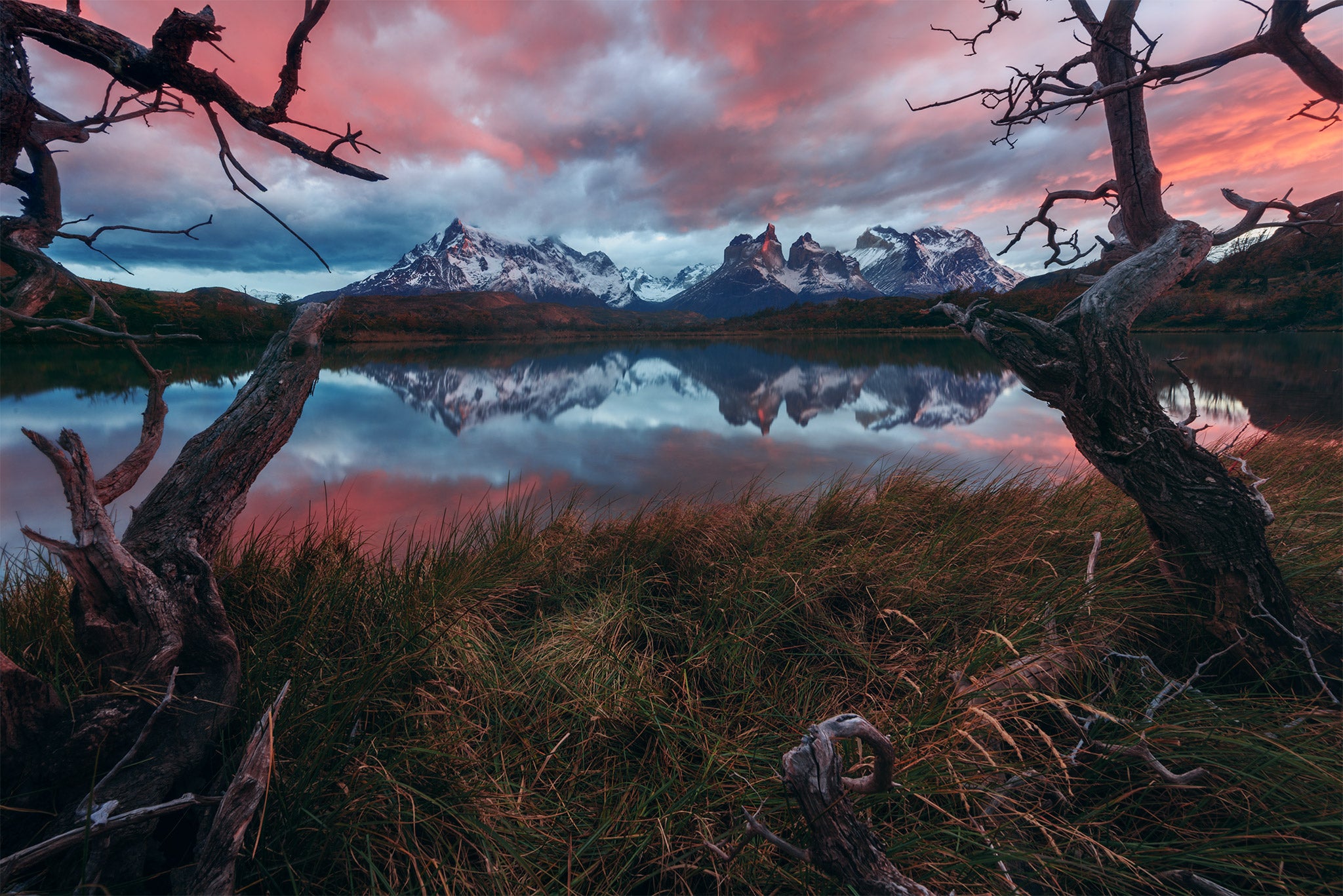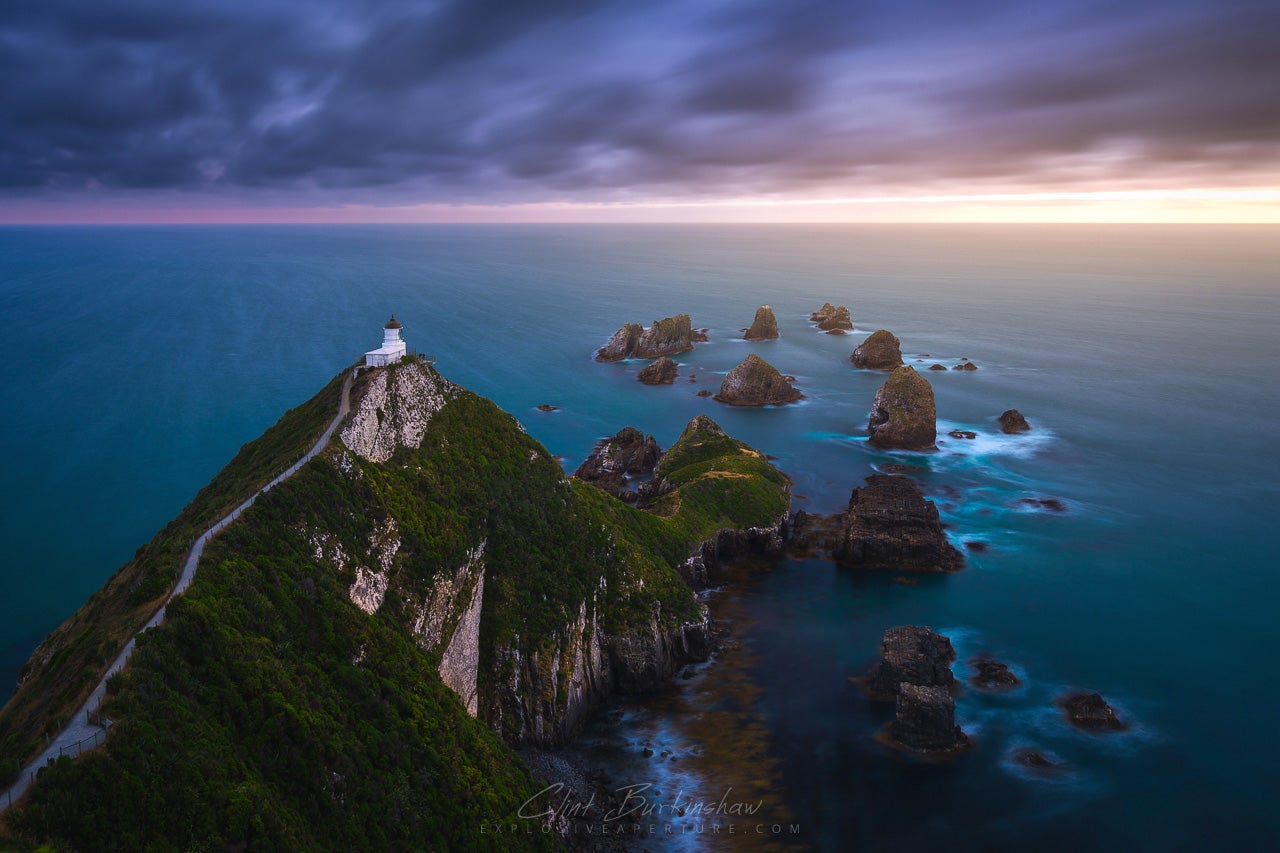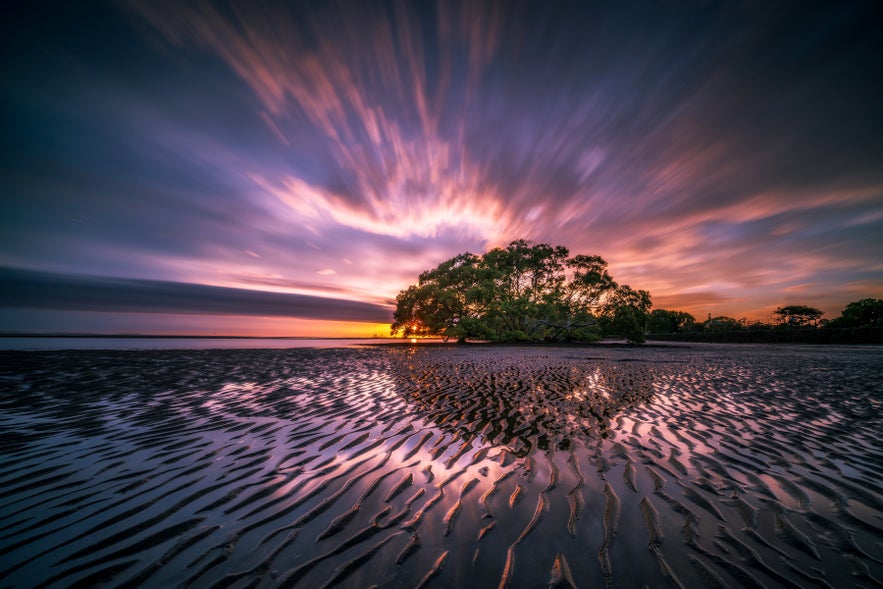
Photography at the beach isn’t as easy as it seems. If you’ve ever taken your camera out with you to the beach on a sunny day, then you’ll know how difficult it can be to take great pictures.
- Check out these articles on Photography Techniques
- See this Complete Guide to Photography at Reynisfjara Black Sand Beach
- Discover How to Photograph the Diamond Beach in Iceland
The amount of sunlight on the beach can reflect off the water and the sand, even on the dreariest of days, making it hard to achieve a well-balanced exposure. Apart from that, finding an interesting subject to focus on can be tricky, particularly when there are other people around.
If you’re not quite sure how to get started taking pictures on the beach, then we have a treat for you. Below are our top tips for making the most of a shoot at the beach, including when to go, what camera gear you’ll need, how to protect your camera from sand, the best settings to use, as well as some bright ideas that will help you get more creative with your beach photography.
#25. Pick a Lens, Any Lens
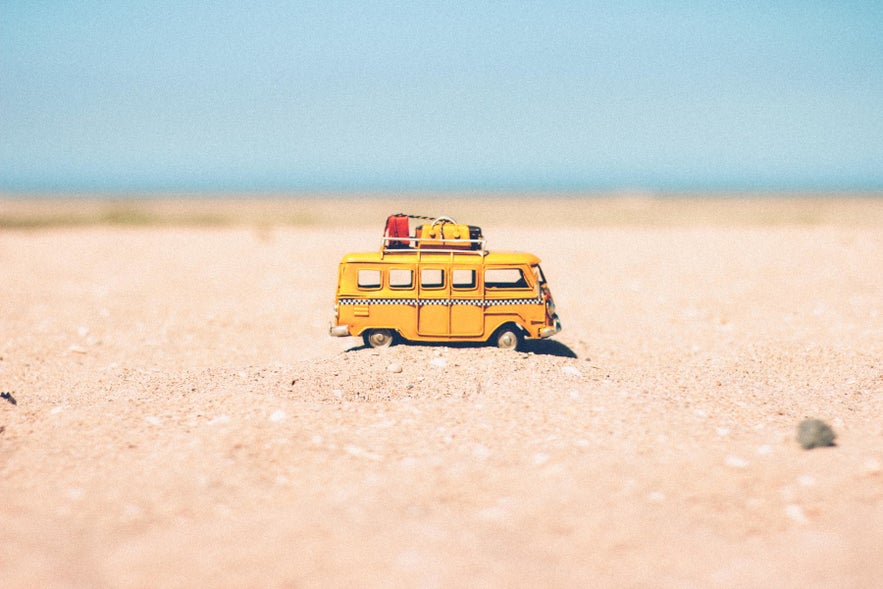 The lens you choose to use will depend largely on what you want to achieve creatively. Photo by: 'Pxhere'.
The lens you choose to use will depend largely on what you want to achieve creatively. Photo by: 'Pxhere'.
Whichever lens you decide to choose will no doubt have an influence upon the types of images that you’ll be able to capture at the beach. If you’re hoping to take pictures of sweeping seascapes, then a wide angle lens will be perfect. On the other hand, a telephoto lens will allow you to zoom in on details both on and offshore, allowing you to capture abstract photographs and to get closer to your subjects without disturbing the moment.
If you’re not quite sure what to bring along, then opt for a mid-range zoom lens, which will give you a bit of middle-ground in terms of focal length.
#24. Bring a Lens Hood
A lens hood is great for shooting into the sun at the beach, so make sure to bring one along. Not only will it help to prevent stray light that may cause lens flares but it will also reduce some of the haze and glare that is associated with backlighting. You’ll end up with less contrast between bright and dark areas in your photographs, while retaining more details.
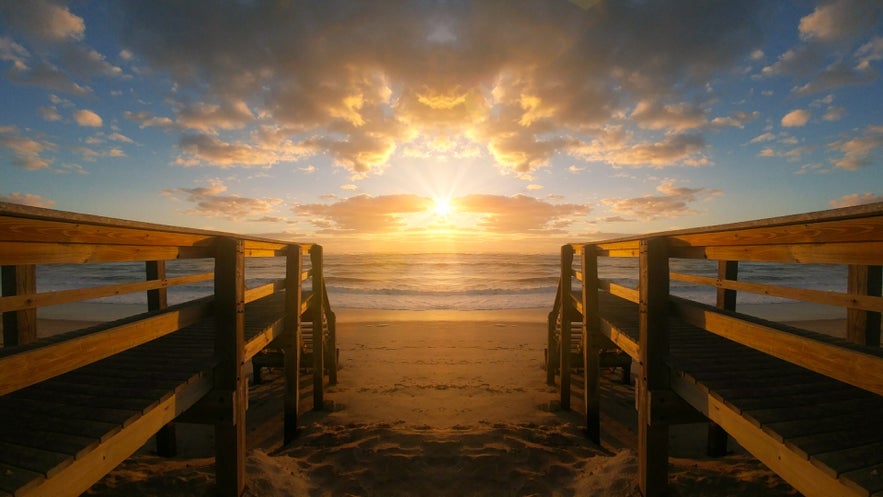 A lens hood is great for helping to reduce glare. Photo by: 'Pxhere'.
A lens hood is great for helping to reduce glare. Photo by: 'Pxhere'.
A lens hood is also great for protecting the front element of your lens from damage should you drop it or bump into something.
#23. Use a Tripod
Whether you shoot handheld or on a tripod at the beach will depend a lot on the photographs that you are hoping to capture. In most instances, you’ll be able to get away with hand-holding your camera, though there are some situations in which the stability of a tripod will do wonders in helping you to reduce camera shake for sharper and cleaner images.
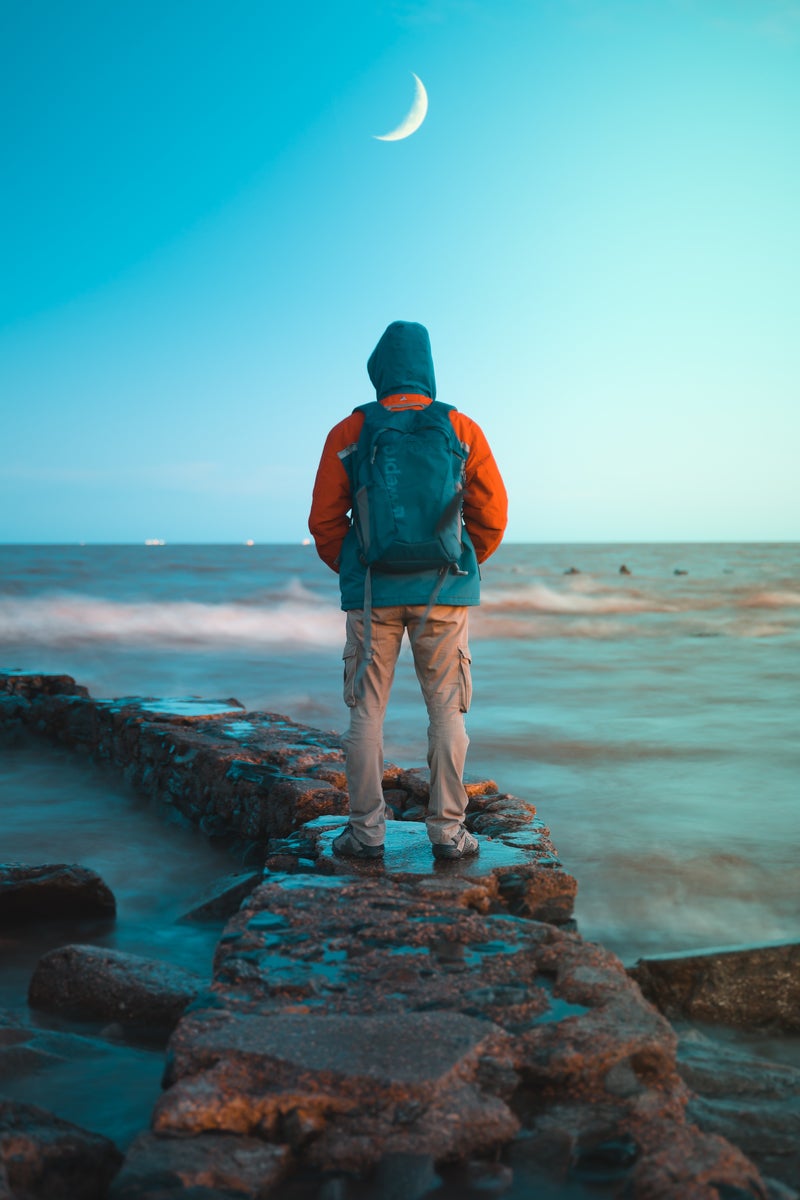 Using a tripod means you can take epic selfies at the beach. Photo by: 'Pxhere'.
Using a tripod means you can take epic selfies at the beach. Photo by: 'Pxhere'.
Having your camera mounted to a tripod also means that you’ll be able to shoot at a lower ISO, which will result in pictures of higher quality with less noise. This is particularly important if you plan to print your photographs at some point in the future.
#22. Apply a Filter
Photography filters can enhance your beach photography, whether you’re photographing people or the landscape around you. Neutral density (ND) filters open up the possibility for slowing the shutter speed and using a wider aperture even on a bright and sunny day, which will allow you to really test your creativity. Meanwhile, polarising filters can help to minimise or reduce glare and reflections on the water at sea.
When you’re shooting at the beach, oftentimes, you will either end up with an over or underexposed part of the image, usually in the foreground or the sky. The reason for this is that sand reflects a lot of light, which can trick your camera’s automatic light meter. To get around this, try using a graduated neutral density (GND) filter to achieve a well-balanced exposure.
#21. Protect Your Camera Gear
As calm as a beach may seem, it’s actually one of the most dangerous places that you can bring your camera gear, so it’s important that you take steps to protect your equipment whenever possible. Sand can create a lot of problems if it happens to get inside your camera or onto the glass of your lens, so try to minimise lens changes. If you really need to change your lens, then do it in relatively shielded and clean area, such as inside your camera bag with your back to the wind.
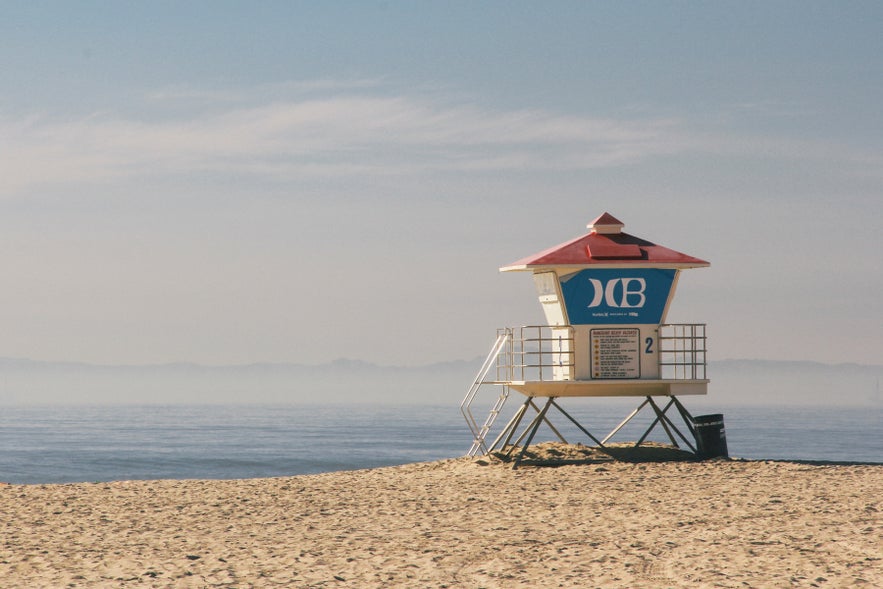 It's important that you protect your camera gear from sand and the elements at the beach. Photo by: 'Pxhere'.
It's important that you protect your camera gear from sand and the elements at the beach. Photo by: 'Pxhere'.
Keep in mind also that salt water can be very corrosive to electronic equipment, so try not to get your camera wet. If you’ll be frolicking around in the waves, then consider using underwater housing equipment or taking a waterproof point-and-shoot camera with you instead.
#20. Go at Sunrise or Sunset
You don’t need good weather to go to the beach but it pays to go at the right time. Sunrises and sunsets are not just for taking long walks along the shore but also for capturing the best light.
 Sunrise and sunset are some of the best times to visit the beach for photography. Photo by: 'Pxhere'.
Sunrise and sunset are some of the best times to visit the beach for photography. Photo by: 'Pxhere'.
You may find that there will be fewer people around at sunrise as compared to sunset. Most people don’t get up early enough in the morning, whereas in the afternoon or evening, they’ll already be out and about.
The lighting will also be different, depending on whether you head out in the morning or the evening. With a sunrise, the colours tend to be more concentrated around the sun, though at sunset you’ll probably notice the colours spread out across the sky. The reason for this is the number of pollutants in the air as a result of human activity later in the day.
- See also: Ultimate Guide to Sunrise Photography
#19. Don’t Miss the Golden Hour
Golden hour occurs right after sunrise and just before sunset. It’s that moment during the day when the sun is low on the horizon and everything is lit up in a warm glow, minimising shadows and contrasts within the environment. It’s a dream to photograph the beach in conditions like this, so be sure to stay after sunrise and get there early before sunset!
 The golden hour is a great time to practice beach photography. Photo by: 'Pxhere'.
The golden hour is a great time to practice beach photography. Photo by: 'Pxhere'.
#18. Visit in the Off-Season
Most beaches are pretty crowded during the summer season, when temperatures are high and everyone is looking for a way to cool off. This can make it very difficult to practice beach photography, particularly if you’re hoping to capture nice seascapes using rock pools and other forms of nature in your foreground.
To maximise your chances of a relaxed shoot without being interrupted by having someone in your frame, try visiting the beach in the off-season. Conditions may be different but that’s part of the charm of beach photography.
#17. Night Photography: Shooting Stars and the Milky Way
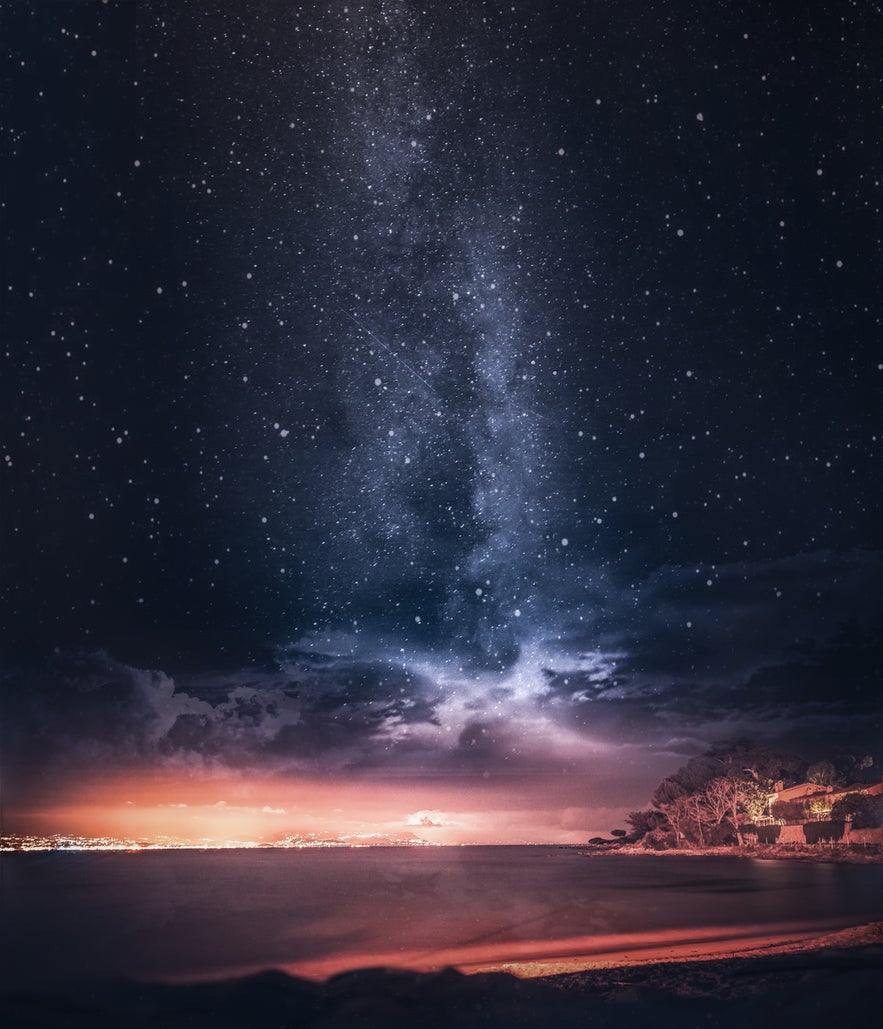 Beaches are great places for practicing night sky, star and Milky Way photography. Photo by: 'Pxhere'.
Beaches are great places for practicing night sky, star and Milky Way photography. Photo by: 'Pxhere'.
When we think of the beach, we automatically imagine warm and sunny days. However, the coastline can be just as beautiful at night, when lit up by a full moon. Even if there isn’t the light of the moon to help with capturing the foreground, you can shoot the stars with the waves gently washing ashore or even take a panorama of the Milky Way arching over the horizon line. These can make for magical scenes, particularly if there are sea stacks on the beach to add further interest.
#16. Switch to Manual
Shooting at the beach at night or in any other conditions can be extremely difficult. With so much sand about, light will be reflected everywhere, increasing your chances of overexposing the scene. Rather than relying on your camera to come up with the correct settings for you to use, try switching to Manual mode. You’ll have more control over the exposure, which will lead to more successful shots.
#15. Use a Low ISO
Using the lowest ISO setting that the conditions will allow is important to achieve images of good quality that are sharp and with little noise. As such, if you have your camera mounted to a tripod, try using ISO 100.
If you will be shooting handheld, then you may need to shoot within the range of ISO 100 to 400 during the daytime, to ensure a shutter speed fast enough to minimise camera shake.
For those who will be shooting the beach at night, you may need to use a higher ISO to capture the amount of ambient light within the scene. Try raising the ISO to 1600 and slowly increasing or decreasing from there, depending on how much light is available.
#14. Pick the Perfect Aperture
Different aperture values suit different subjects and scenes. The aperture that you choose to use will depend largely upon what you are trying to photograph.
For portraits at the beach, try opening up the aperture so that you can blur the background. This will help you to isolate your subject from everything else that is going on in the surroundings. If you are unable to open the aperture without overexposing the image, try attaching an ND filter to reduce the amount of light entering your lens.
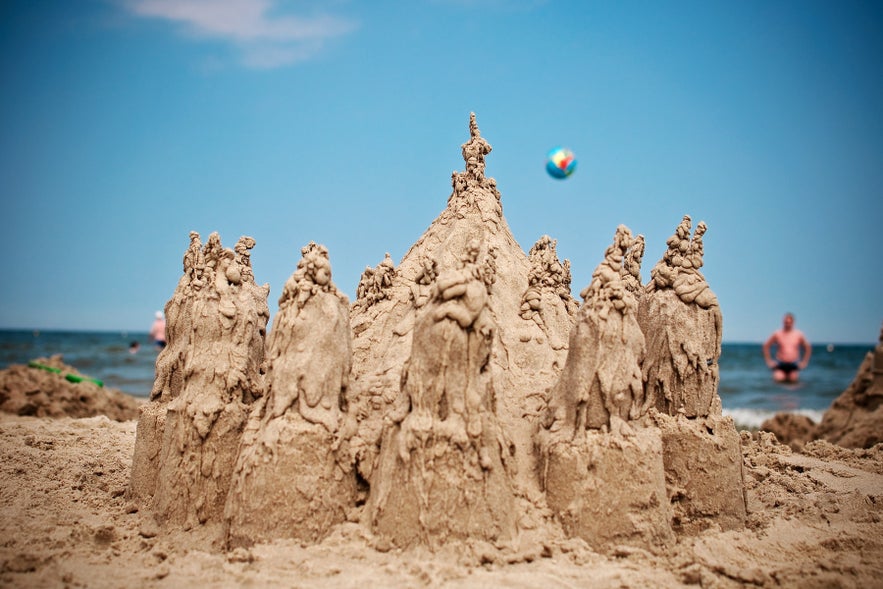 A wide aperture will allow you to blur the background, which can help to minimise distractions. Photo by: 'Pxhere'.
A wide aperture will allow you to blur the background, which can help to minimise distractions. Photo by: 'Pxhere'.
On the other hand, if you will be photographing a cluster of objects such as beach chairs and umbrellas, you may need to close the aperture to around f/5.6 or f/8, in order to have all of the objects sharp and in focus.
For those who are photographing nature at the beach, including landscapes and seascapes, try setting the aperture in the range of f/11 to f/16. This will result in most of the scene being in focus, from the foreground to the background.
#13. Experiment with Shutter Speed
The beach is one of the best places where you can experiment with your shutter speed. Try slowing the shutter speed down for interesting motion effects, such as blurred action shots of people playing beach volleyball, or silky and dreamy water in the waves. Again, if you are unable to slow the shutter speed down enough, you may benefit from attaching an ND filter to reduce the amount of light entering the lens, meaning that you’ll need a longer shutter speed to expose correctly.
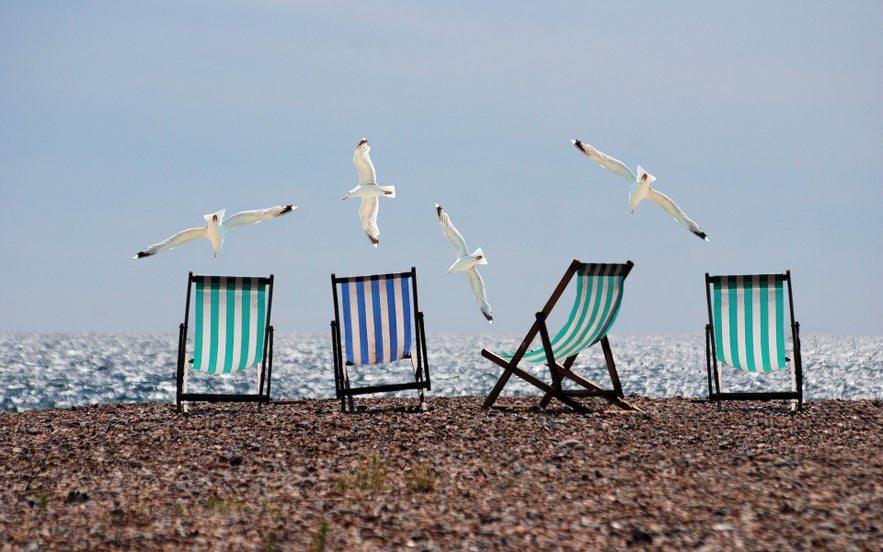 Use a faster shutter speed to freeze the motion of your subjects. Photo by: 'Pxhere'.
Use a faster shutter speed to freeze the motion of your subjects. Photo by: 'Pxhere'.
You can also try using a faster shutter speed to freeze the movement of waves crashing onto rocks by the shore, capturing every single droplet still in the air, or even seagulls in mid-flight. The possibilities are endless!
#12. Try Exposure Bracketing
We’ve mentioned several times now that it can be difficult to capture a well-balanced exposure at the beach. If you’re not using filters, then try the exposure bracketing technique to capture a few images that encapsulate the entire dynamic range of the scene. You can then blend the images together later on using post-processing software such as Adobe Photoshop, to achieve a final, single well-exposed image.
- See also: Ultimate Guide to HDR Photography
#11. Change the White Balance
Depending on which season you decide to head to the beach, the atmosphere there can be vastly different. For example, visiting on a cold and stormy winter’s day is a far cry from visiting on a sunny summer afternoon. The conditions will be reflected in the general feeling or mood, so your aim is to capture that and to communicate it to your audience. Try altering the white balance to be cooler or warmer, which will help you to convey the emotion in the scene.
#10. Use a Flash
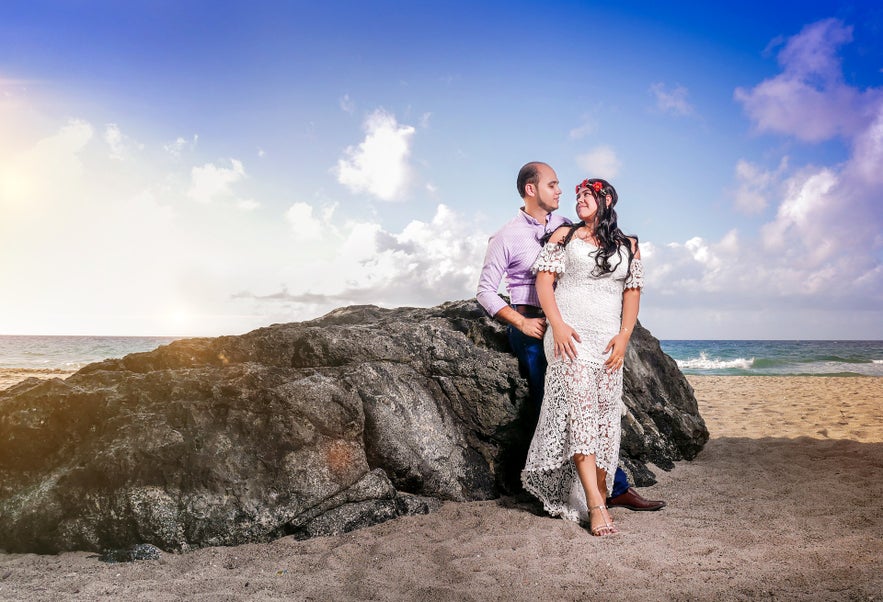 Using a flash can help to eliminate shadows on your subject's faces. Photo by: 'Fredy Martinez Enamorado, Pixabay'.
Using a flash can help to eliminate shadows on your subject's faces. Photo by: 'Fredy Martinez Enamorado, Pixabay'.
If you’re taking portraits at the beach and there are too many shadows on the faces of your subjects, try using a flash for fill light. This will help to illuminate them against the very bright backdrop. It will also result in a better exposure, balancing all of the ambient light that is being reflected by the sand, ocean and sky.
- See also: Ultimate Guide to Wedding Photography
#9. Look for Details and Textures
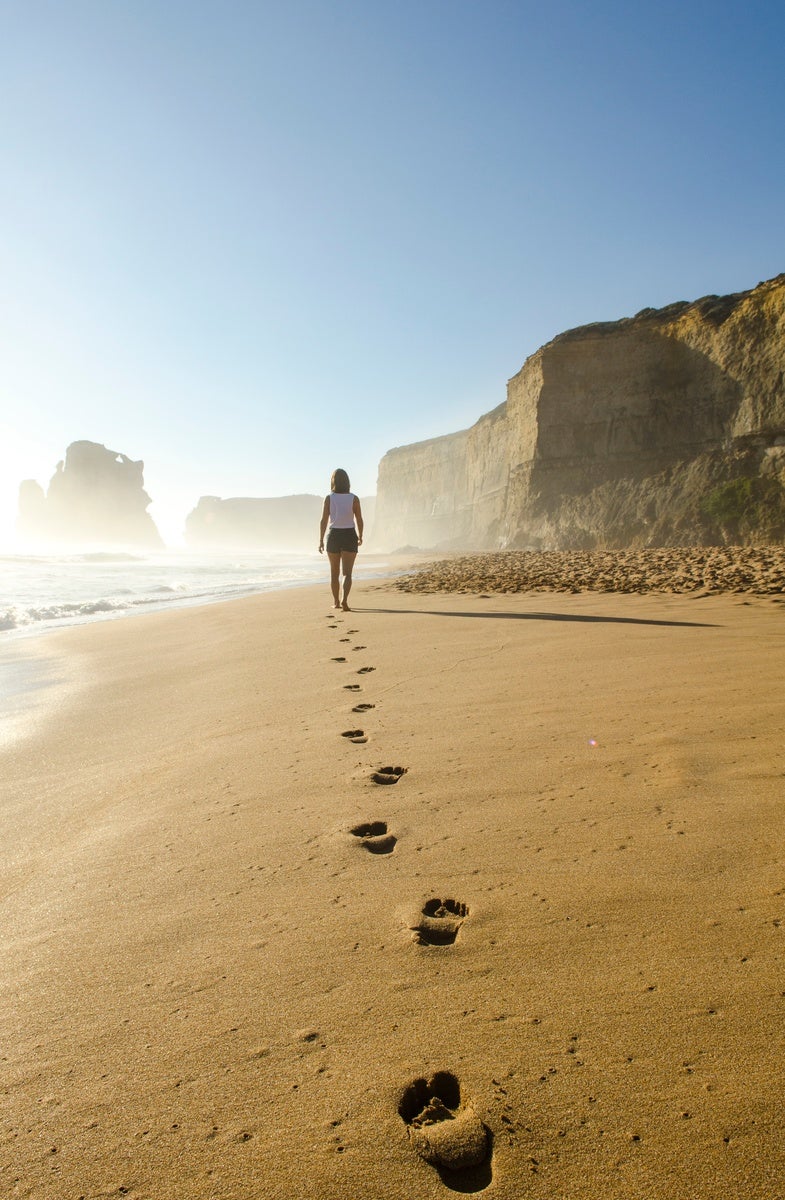 Footprints can be great leading lines. Photo by: 'Pxhere'.
Footprints can be great leading lines. Photo by: 'Pxhere'.
There is so much to explore at the beach, from the sand beneath your feet to rock pools full of marine critters. Even footprints in the sand can make for an interesting leading line into whatever you are photographing in the distance. Wherever possible, keep your eyes peeled for little details and textures that can make for an interesting composition.
#8. Include Other People
Most of the time, you probably won’t want to have other people in your shots, particularly if you’re trying to capture a landscape or a seascape at the beach. However, there will be situations in which including other people can elevate your images, making the composition much more creative and dynamic.
 Make sure you get permission before including people in your shots. Photo by: 'Pxhere'.
Make sure you get permission before including people in your shots. Photo by: 'Pxhere'.
Just keep in mind that if you do take photos of people, you should obtain their permission first, so as not to be that creepy person at the beach.
#7. Be Candid
 Shooting candidly can capture some very fascinating moments. Photo by: 'Pxhere'.
Shooting candidly can capture some very fascinating moments. Photo by: 'Pxhere'.
Although getting people to pose can be the fastest way to include them in your beach photography, try getting their permission to take photos and then waiting for candid moments instead. When people let their guard down as they immerse themselves in the surroundings is when they’ll feel the most freedom to express their joy.
If you’ve ever tried to take family photos at the beach, then you’ll understand that it’s much easier to capture the shot when children aren’t aware that they have a camera pointed at them!
#6. Look for Reflections
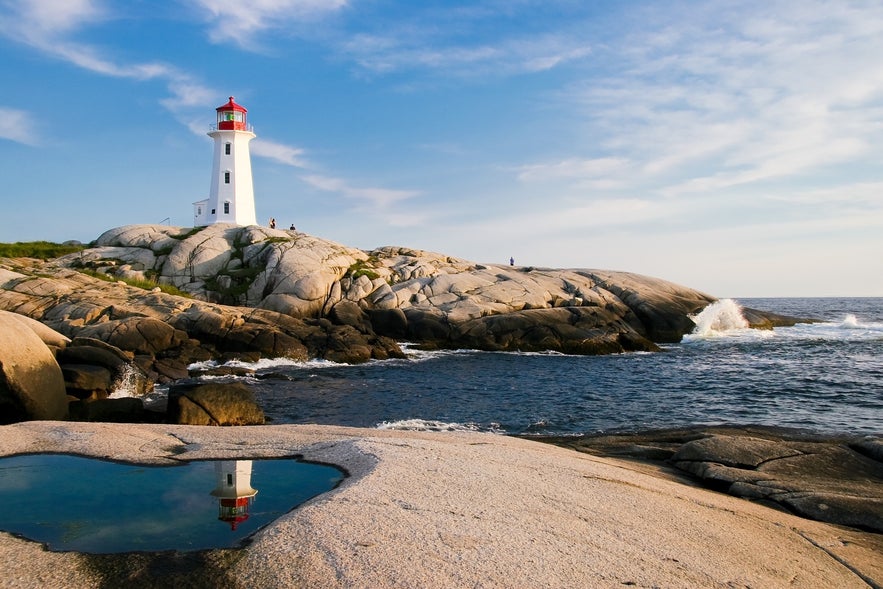 Reflections can add another layer of interest to your beach photography. Photo by: 'Pxhere'.
Reflections can add another layer of interest to your beach photography. Photo by: 'Pxhere'.
Reflections can happen in any still body of water and can add another layer of interest to your shots. At the beach, you can find reflections in rock pools, puddles and even when the tide is out, especially if there is water retained in the sand beneath.
#5. Take Pictures of Silhouettes
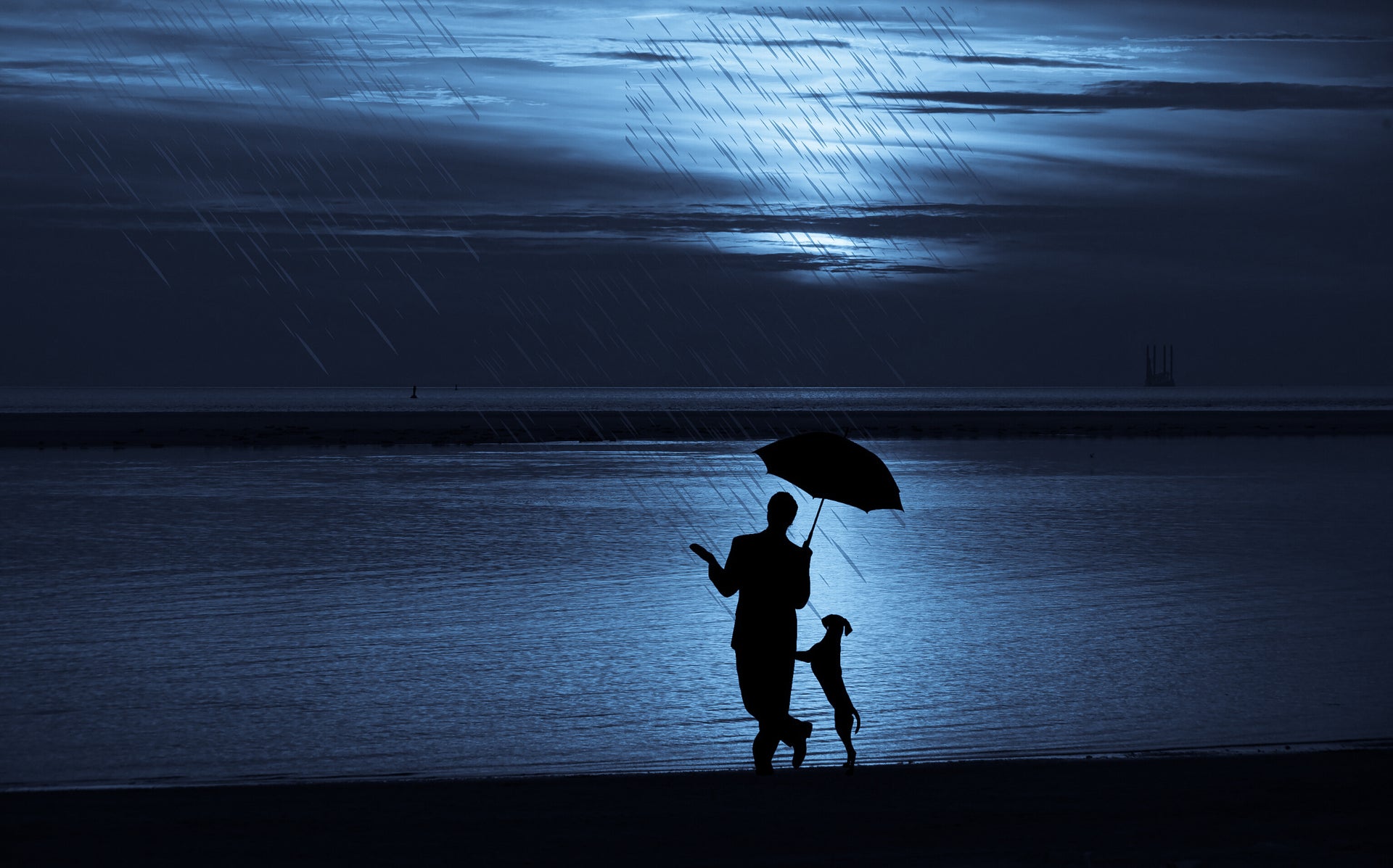 Silhouettes minimise distractions and place the emphasis on your subjects. Photo by: 'Pxhere'.
Silhouettes minimise distractions and place the emphasis on your subjects. Photo by: 'Pxhere'.
While having a flash will help to illuminate your subjects against colourful backgrounds, try putting it away during sunrise and sunset. These are the perfect moments for capturing silhouettes. An image of a silhouette minimises distractions such as facial expressions and patterns, which can have an effect on how your audience will perceive the subjects. By reducing what their eyes can focus on, you can place the emphasis back on your subjects in a different way.
#4. Explore for Interesting Subjects
 Boats make for interesting subjects at the beach for photography. Photo by: 'Pxhere'.
Boats make for interesting subjects at the beach for photography. Photo by: 'Pxhere'.
If you’re not keen on taking pictures of people at the beach, then try exploring the coastline for other interesting subjects instead. Some ideas that come to mind include wooden piers stretching out into the horizon, as well as boats moored near the shore or even seaweed and other debris that has washed in with the tide. All of these make great subjects, particularly when the lighting is just right.
#3. Capture a Sunstar
When the sun hits the horizon or even when it is partially obscured by an object such as a cliff is the perfect moment for you to capture a sunstar at the beach. To do so, use a narrow aperture in the range of f/16 to f/22. Make sure that you remove any filters or make sure that they are very clean beforehand, otherwise you may end up with ugly lens flares and smudges in your shot.
#2. Look Out for Wildlife
 There are lots of animals at the beach, such as crabs! Photo by: 'Pxhere'.
There are lots of animals at the beach, such as crabs! Photo by: 'Pxhere'.
Going on a safari is not the only time that you’ll be able to photograph wildlife. Beaches are full of animals, all the way from nesting birds to starfish, crabs, sea urchins and other creatures hiding out in rock pools along the shore. They make for great subjects amidst the sea of skin and sand.
#1. Last but Not Least… Make Sure the Horizon Line is Straight!
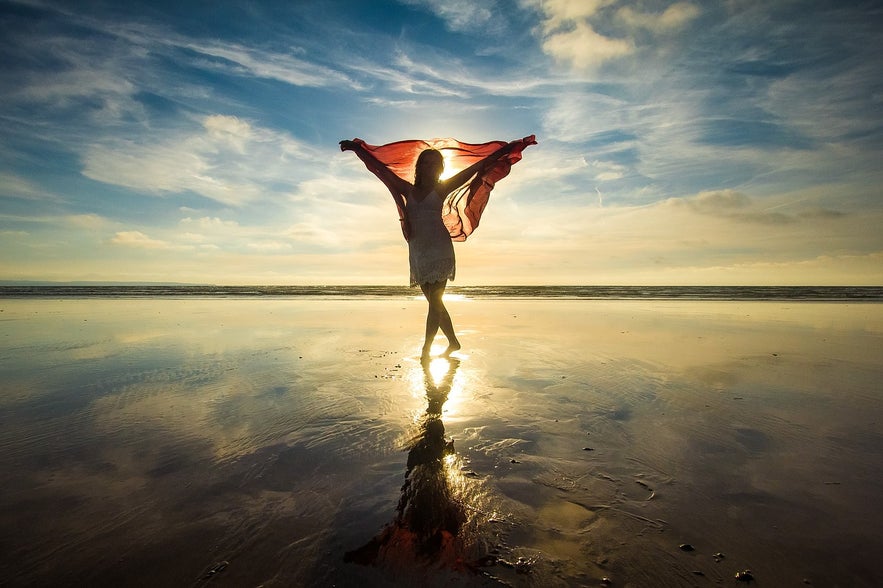 A straight horizon line will make for a more powerful image. Photo by: 'Juan Valdez, Pixabay'.
A straight horizon line will make for a more powerful image. Photo by: 'Juan Valdez, Pixabay'.
This is one of the most important aspects of beach photography. When you’re shooting out to sea, or even when there is part of the ocean in your shot, it’s incredibly easy for the audience to notice whether or not the horizon line is wonky. A horizon line that is askew can really throw off the balance of your image and make people feel sea-sick. So before you take your shot, check that the horizon is straight from one side of the frame to the other. This way, you’ll end up with a treasure trove of photographs from the beach that you can truly be proud of!
About the author: Serena Dzenis is a landscape photographer based in Iceland. You can find more of her work on her website or by following her on Facebook and Instagram.
Have you got any other tips for getting creative with beach photography? What is your favourite beach to shoot at? Leave a comment and share your thoughts below!


